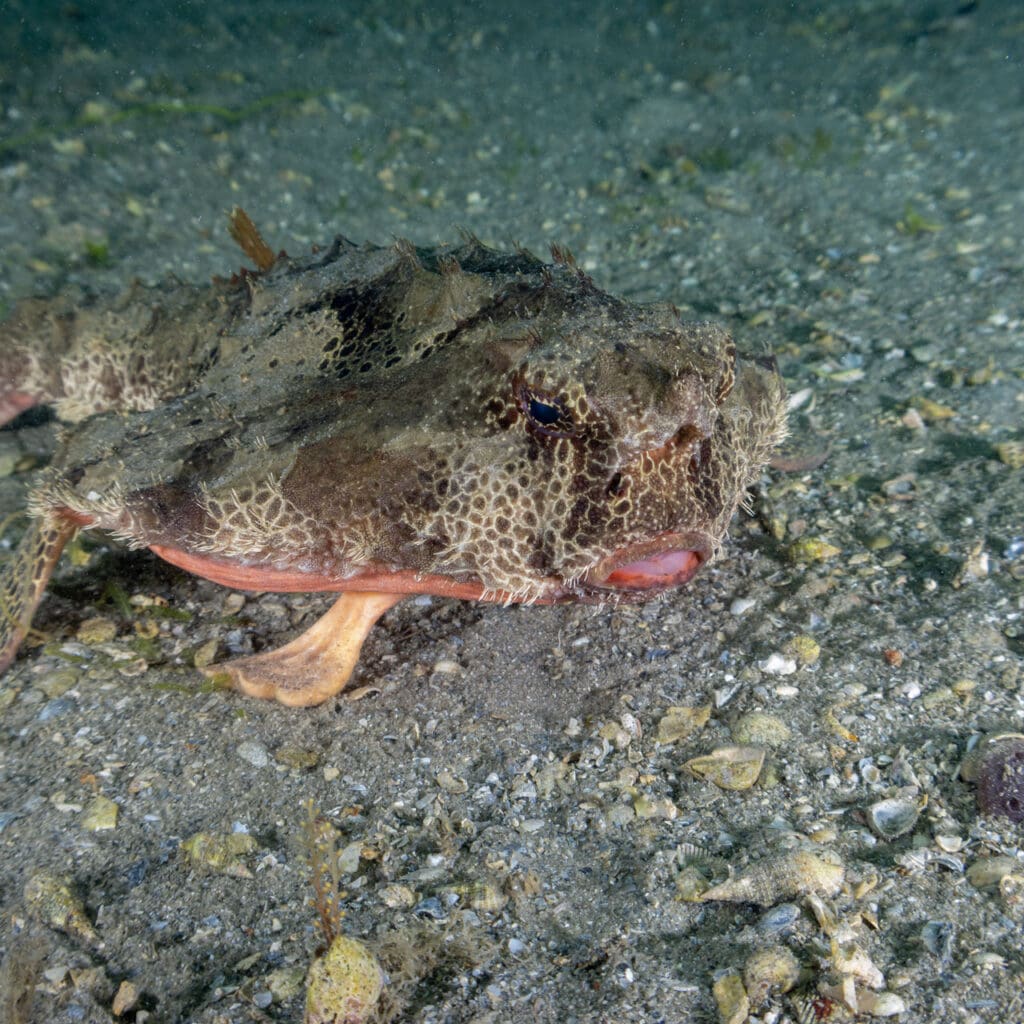It’s Friday, so it must be time for another Friday Fish Fact #FFF.
If you think the ocean is all about sleek sharks and graceful dolphins, think again. Meet the polka dot batfish (Ogcocephalus radiatus), the ocean’s answer to a toddler playing with makeup. With its quirky looks and even quirkier behavior, this fish is sure to bring a smile to any diver’s face.
The Polka Dot Batfish: A Fashion Statement Gone Wrong
First things first, let’s talk about the polka dot batfish’s appearance. Imagine a fish that looks like it got dressed in the dark and accidentally put on its polka-dotted pajamas and bad lipstick. This fish is covered in spots, which might make you think it’s trying to blend in with a 1970s disco floor. But no, these spots are actually a clever form of camouflage, helping the batfish blend in with the sandy and muddy ocean floor.
The polka dot batfish is not just about spots, though. It has a body shape that can only be described as “unique.” With a broad, flattened body and pectoral fins that look like they belong on a bird rather than a fish, the batfish uses these fins to “walk” along the ocean floor. Yes, you read that right. This fish walks. It shuffles along the seabed in a way that can only be described as a fishy moonwalk.
Dining with the Batfish: What’s on the Menu?
Now, you might be wondering, what does a fish with such a peculiar appearance eat? The polka dot batfish is a bottom-dweller with a taste for the finer things in life—if you consider crabs, shrimps, mollusks, and worms to be fine dining. It uses its pectoral fins to cling to the bottom and wiggles its modified dorsal fin, which is located under its rostrum (a unicorn-like projection between its eyes), to attract prey. When an unsuspecting snack gets too close, the batfish snaps it up with its circular mouth.
Where to Find These Underwater Jokers
If you’re a diver in South Florida and you’re eager to meet these underwater quirkster, you’re in luck. One of the best places to encounter polka dot batfish is at Blue Heron Bridge in Riviera Beach. This dive site is renowned for its incredible biodiversity and is a hotspot for underwater photographers and marine life enthusiasts. The shallow waters (ranging from 5 to 25 feet) make it accessible for divers of all skill levels, and the variety of marine life you can encounter here is astounding.
Blue Heron Bridge is a muck dive site, which means it’s perfect for spotting all sorts of unusual critters, including the polka dot batfish. The best time to dive here is around high slack tide when the visibility is at its peak and the currents are minimal. So, if you’re planning a dive trip, make sure to check the tide charts and get ready for a hilarious underwater adventure.
The Batfish’s Secret Weapon: The Art of Disguise
One of the most amusing things about the polka dot batfish is its ability to disguise itself. When threatened, this fish has a few tricks up its sleeve. It can flatten its body against the seabed, making it almost invisible to predators. If that doesn’t work, it can scurry away using its pectoral fins like legs, making a hasty (and somewhat comical) retreat.
But the batfish’s disguise isn’t just for escaping predators. Its warty, tubercle-covered body and rough texture help it blend in with the ocean floor, making it a master of stealth. This camouflage is so effective that divers often have to look closely to spot one of these elusive fish.
A Fish with Personality
What sets the polka dot batfish apart from other marine creatures is its personality. This fish isn’t just a passive bottom-dweller; it’s an active participant in its environment. Divers who encounter polka dot batfish often describe them as curious and unafraid. They might freeze when approached, but if you get too close, they’ll scurry away in a manner that can only be described as adorable.
Conservation and the Future of the Polka Dot Batfish
While the polka dot batfish isn’t currently listed as endangered, it’s important to remember that all marine life faces threats from habitat destruction and pollution. Sites like Blue Heron Bridge are protected areas, and divers are encouraged to respect the environment and avoid disturbing the marine life. By doing so, we can ensure that future generations of divers will have the chance to meet these delightful fish.
Some text content created by generative AI. Photograph courtesy Christopher Duncan, Copyright 2025 CDA Underwater Photography, all rights reserved worldwide.

